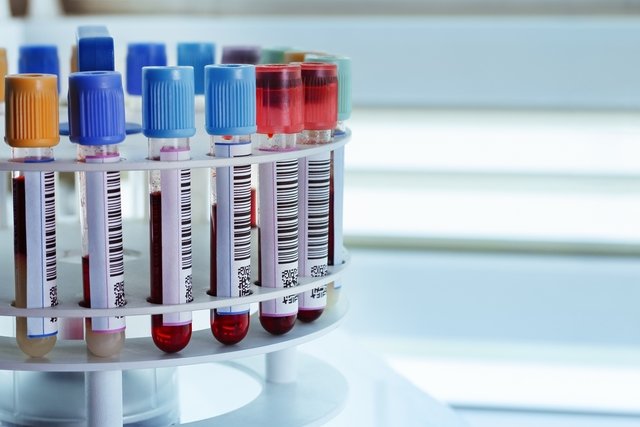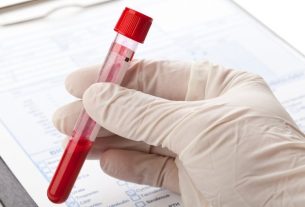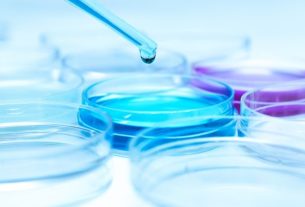Lactate is a product of glucose metabolism, that is, it is the result of the process of transforming glucose into energy for cells when there is not enough oxygen, a process called anaerobic glycolysis. However, even in aerobic conditions, where there is oxygen, lactate is produced, but in smaller quantities.
Lactate measurement is most often carried out in the hospital to assess the patient’s general condition and response to treatment, especially when a blood infection is suspected. However, it can also be indicated to evaluate the athlete’s performance and the intensity of the exercise, for example.
Lactate is an important substance, as it is considered a signal for the Central Nervous System, a biomarker of nervous changes and tissue hypoperfusion, in which there is little oxygen reaching the tissues, and of intensity of physical activity and muscular fatigue, since the amount The more intense the activity, the greater the need for oxygen and energy, which leads to greater lactate production.

When to take a lactate test
Lactate measurement is widely used in clinical practice in hospitalized patients and as an indicator of the intensity of physical activity and muscle fatigue.
In hospitals, lactate measurement is important to assess the patient’s general condition and check the response to treatment. Normally the dosage is done in hospitalized patients who are suspected of or have been diagnosed with sepsis or septic shock, which are situations characterized by lactate above 2 mmol/L in addition to decreased blood pressure, rapid breathing, decreased urine production and confusion. mental.
This way, when measuring lactate it is possible to check whether the patient is responding to the treatment or whether it is necessary to change the therapeutic plan and increase care according to the decrease or increase in lactate levels.
In sports, lactate dosage allows determining the athlete’s level of performance and the intensity of the exercise. In very intense or long-lasting physical activities, the amount of oxygen available is not always sufficient, and the production of lactate is necessary to maintain cell activity. In this way, measuring the amount of lactate after physical activity allows the physical educator to indicate a more appropriate training plan for the athlete.
How the exam is carried out
To take the lactate test, it is not necessary to fast or any other type of preparation, it is only recommended that the person avoid physical activity the day before taking the test, as exercise can interfere with the test results.
Lactate reference value
The blood lactate reference value may vary depending on the laboratory, however the normal value is considered to be between 5.7 to 22.0 mg/dL or 0.63 to 2.44 mmol/L, at rest . After exercise, it is common for lactate concentration to increase, however, no reference value has been established for this situation.
What does high lactate mean?
The main causes of high lactate are:
- Sepsis and septic shockin which, due to the production of toxins by microorganisms, there is a decrease in the amount of oxygen that reaches the tissues, resulting in an increase in lactate production;
- Intense physical activityas in some situations the amount of oxygen to perform the exercise is not sufficient, resulting in an increase in lactate production;
- Muscle fatiguedue to large amounts of lactate accumulated in the muscle;
- Systemic inflammatory response syndrome (SIRS), as there is a change in blood flow and immune system cells, resulting in an increase in lactate production in an attempt to maintain cellular activities and help resolve inflammation. Lactate measurement in this situation is widely used to monitor the patient’s response and measure the risk of organ failure, being an indicator of prognosis;
- cardiogenic shockin which there is a change in the blood supply to the heart and, consequently, oxygen;
- Hypovolemic shockin which there is a large loss of fluids and blood, altering the distribution of blood to the tissues;
Furthermore, some studies have shown that increased lactate can occur in the case of liver and kidney problems, diabetes mellitus, drug and toxin poisoning and metabolic acidosis, for example.
An increase in the concentration of circulating lactate, called hyperlactemia, can occur due to increased lactate production, changes in the supply of oxygen to the tissues or a deficiency in the elimination of this substance from the body, resulting in its accumulation in the blood. In this way, based on the assessment of lactate concentration, it is possible to diagnose diseases, monitor the patient’s evolution and response to treatment and predict the clinical outcome.
Bibliography
- NATIONAL QUALITY CONTROL PROGRAM. Critical values of laboratory tests that require immediate decision-making, in compliance with Anvisa’s RDC 302:2005. 2019. Available at: <http://pncq.org.br/uploads/2019/Valores%20cr%a1ticos%20no%20laborat%a2rio%20cl%a1nico_nov2019.pdf>. Accessed on 06 Jul 2022
- BIOSPHERE ENCYCLOPEDIA, KNOWLEDGE SCIENTIFIC CENTER. Use of lactate to aid in the prognosis of critically ill patients. 2018. Available at: <https://www.conhecimento.org.br/enciclop/2018B/AGRAR/uso%20do%20lactato.pdf>. Accessed on September 26, 2019
- ALMEIDA, Samantha L. S et al. Hyperlactatemia on ICU Admission is a Determinant of Morbidity and Mortality in High-Risk Non-Cardiac Surgical Interventions. Brazilian Journal of Intensive Care. Vol 18. 4 ed; 360-365, 2006
- SANTOS, Gustavo B. Lactate: From villain to good guy. Brazilian Journal of Functional Nutrition. Vol 42. 77 ed; 23-30, 2019
- BAKKER, Jan. Lactate is the target for early resuscitation in sepsis. Brazilian Journal of Intensive Care. Vol 29. 2 ed; 124-127, 2017

Sign up for our newsletter and stay up to date with exclusive news
that can transform your routine!
Warning: Undefined array key "title" in /home/storelat/public_html/wp-content/plugins/link-whisper-premium/templates/frontend/related-posts.php on line 12
Warning: Undefined array key "title_tag" in /home/storelat/public_html/wp-content/plugins/link-whisper-premium/templates/frontend/related-posts.php on line 13



